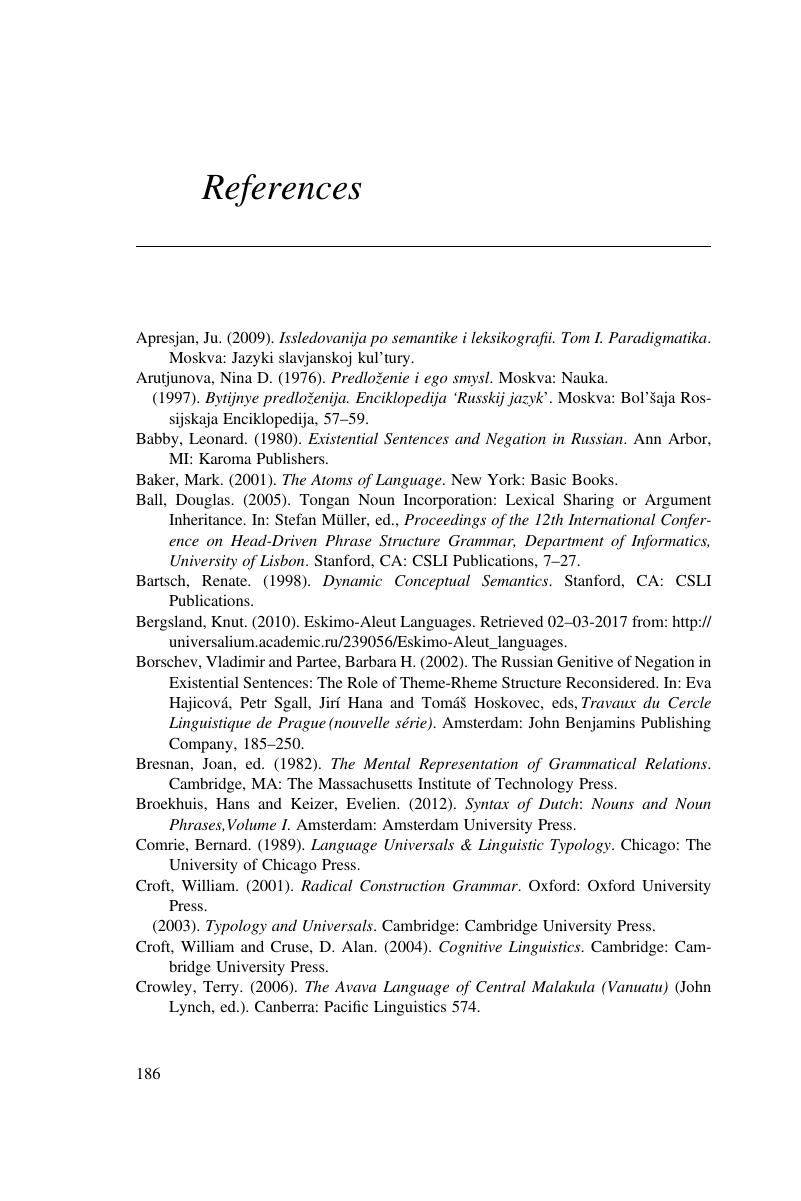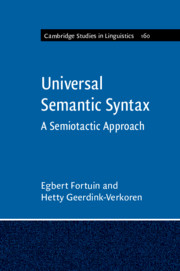Book contents
- Universal Semantic Syntax
- Series page
- Cambridge Studies in Linguistics
- Universal Semantic Syntax
- Copyright page
- Epigraph
- Contents
- Acknowledgements
- Abbreviations
- Introduction
- Part I The Semiotactic Theory
- Part II Application of the Theory
- Conclusion: The Syntactic Theory from a Semantic Perspective
- Book part
- References
- Index
- References
References
Published online by Cambridge University Press: 25 April 2019
- Universal Semantic Syntax
- Series page
- Cambridge Studies in Linguistics
- Universal Semantic Syntax
- Copyright page
- Epigraph
- Contents
- Acknowledgements
- Abbreviations
- Introduction
- Part I The Semiotactic Theory
- Part II Application of the Theory
- Conclusion: The Syntactic Theory from a Semantic Perspective
- Book part
- References
- Index
- References
Summary

- Type
- Chapter
- Information
- Universal Semantic SyntaxA Semiotactic Approach, pp. 186 - 190Publisher: Cambridge University PressPrint publication year: 2019



